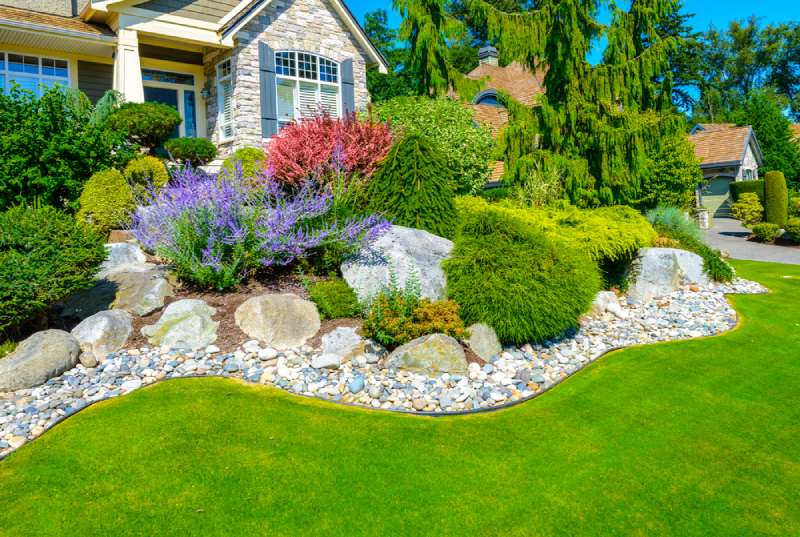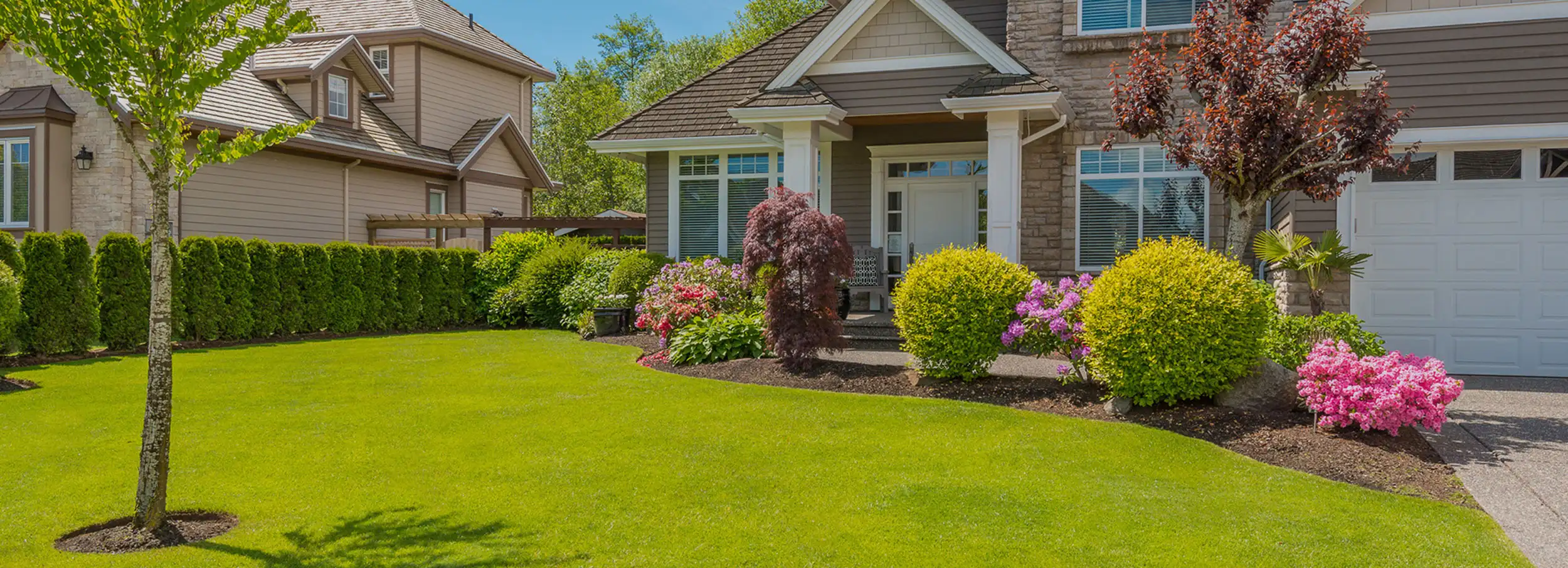Change Your Outside Area with Specialist Palm Desert Landscaping Services
Change Your Outside Area with Specialist Palm Desert Landscaping Services
Blog Article
A Comprehensive Guide to Designing and Implementing Effective Landscape Design Solutions
The art and scientific research of landscaping extend past plain aesthetic appeals; they involve a thoughtful integration of style principles, ecological stewardship, and useful implementation. A comprehensive overview to effective landscape design options begins with an in-depth understanding of your exterior room, emphasizing the importance of proportion, unity, and equilibrium. As we discover sustainable strategies and the option of suitable plants, the effects for biodiversity and neighborhood well-being end up being increasingly obvious. What techniques can one use to guarantee these landscapes not just thrive yet likewise grow in harmony with their environments?

Understanding Landscape Style Principles
One could wonder what fundamental aspects add to effective landscape style. At its core, successful landscape layout depends upon numerous key principles that lead the plan and option of aspects within an area. These principles include unity, proportion, rhythm, and equilibrium, each serving to create an unified outside environment.
Unity refers to the natural relationship amongst various elements, ensuring that they work with each other visually and functionally. Equilibrium can be achieved via unbalanced or balanced arrangements, allowing the landscape to really feel stable and welcoming. Proportion includes understanding the range of elements in connection to each various other and the surrounding environment, promoting aesthetic consistency and convenience.

Analyzing Your Outdoor Area
Prior to applying the concepts of landscape design, a complete analysis of your outdoor space is crucial. This preliminary analysis helps define the range of your landscape design task and ensures that your style lines up with the special features of your residential property. Begin by assessing the measurements of your room, taking precise measurements to understand the offered area for different aspects such as gardens, outdoor patios, and pathways.
Next, observe the existing features of your landscape, including topography, dirt top quality, and drain patterns. These elements dramatically influence plant selection and placement. Furthermore, analyze the sunlight exposure across various locations throughout the day, as this will impact the types of plants that thrive in your yard.
Take into consideration the microclimates developed by structures, trees, and other barriers, as they can influence temperature and moisture degrees. Last but not least, make note of any type of existing plants or hardscape components that you desire to get rid of or retain. This extensive assessment prepares for a effective and educated landscaping remedy, making certain that your style is not only aesthetically pleasing but lasting and also functional for several years to come.
Sustainable Landscape Design Techniques
Incorporating lasting landscaping strategies is necessary for creating an ecologically liable outside room. These practices not just promote environmental equilibrium however additionally enhance the visual and useful worth of a landscape. One foundational method find out here now is the utilization of native plants, which call for less water and maintenance while sustaining local wildlife. Applying efficient irrigation systems, such as drip watering, decreases water waste and guarantees that plants obtain adequate moisture.

One more reliable technique is the calculated positioning of trees and bushes to provide all-natural windbreaks and shade, therefore reducing energy prices (Palm Desert Landscaping). Rain gardens can be integrated into the landscape layout to manage stormwater overflow effectively, filtering toxins before they go into rivers
Picking the Right Plants
Choosing the right plants for your landscape is essential to accomplishing both aesthetic allure and ecological consistency. The procedure begins with an understanding of your regional climate, dirt problems, and the details microenvironments within your landscape. Assessing elements such as sunlight direct exposure, moisture levels, and existing flora will assist you select plants that grow in your one-of-a-kind setting.
Consider integrating indigenous plants, as they are well-adapted to neighborhood conditions, require less maintenance, and support neighborhood wild animals. In addition, picking a varied selection of species can enhance biodiversity while reducing the danger of condition and insect outbreaks. It is important to assess the growth go right here habits, blooming durations, and seasonal shades of prospective plants to produce a vibrant and cohesive landscape.
Additionally, think of the meant use the room; for example, if the area will certainly experience high foot traffic, choose resistant ground covers. By attentively selecting plants that align with both your visual objectives and ecological demands, you can create a lasting landscape that not only enhances your home but additionally adds favorably to the bordering community.

Execution and Upkeep Strategies
As soon as the best plants have been chosen for your landscape, the focus shifts to reliable execution and recurring maintenance techniques. Effective installment starts with proper site preparation, which includes dirt screening to establish nutrient degrees click to find out more and pH, followed by changing the soil as needed. Thoroughly set up plants according to their growth routines and light requirements, making certain ample spacing to promote healthy and balanced growth.
Irrigation is a critical aspect of execution. Develop a watering timetable that takes into consideration the details demands of each plant varieties, readjusting for seasonal adjustments. Making use of drip watering systems can improve water effectiveness and minimize overflow.
Maintenance approaches must be implemented to make certain the long life and vigor of your landscape. Routine tasks include weeding, mulching, and trimming to regulate development and stop illness. Fertilization should be performed based upon soil tests, providing the essential nutrients without over-fertilizing.
Monitoring for parasites and illness is necessary; early discovery can avoid significant damages. Finally, seasonal adjustments to upkeep regimens, such as winterizing perennials and preparing for spring development, will certainly guarantee that your landscape stays healthy and aesthetically attractive year-round.
Final Thought
To conclude, reliable landscaping options require a thorough understanding of layout principles, careful analysis of outdoor areas, and the application of sustainable methods. The option of appropriate plant types plays a critical function in boosting aesthetic charm and eco-friendly durability - Palm Desert Landscaping. Effective execution and ongoing maintenance better ensure the longevity and vigor of landscapes. By integrating these elements, landscapes can be changed right into gorgeous, practical settings that advertise biodiversity and add positively to area wellness.
One may question what fundamental components contribute to efficient landscape style. At its core, successful landscape design pivots on several crucial concepts that guide the arrangement and choice of aspects within an area.Selecting the right plants for your landscape is essential to accomplishing both visual allure and environmental harmony. It is vital to examine the growth practices, blooming periods, and seasonal shades of possible plants to create a dynamic and natural landscape.
As soon as the best plants have actually been picked for your landscape, the focus shifts to efficient execution and recurring maintenance techniques.
Report this page